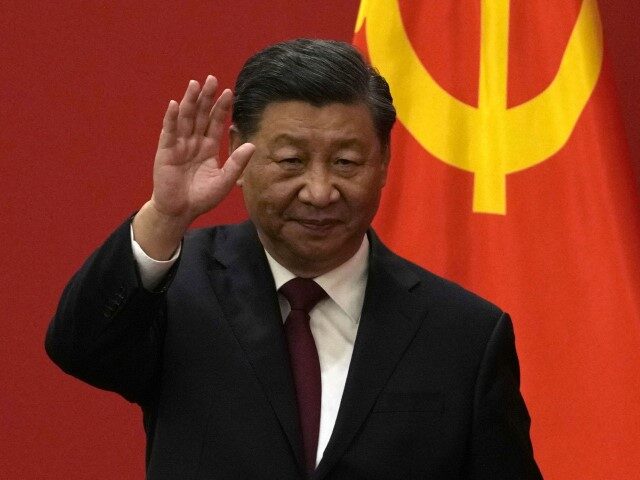The People’s Liberation Army (PLA) of China was unusually public on Wednesday about its successful test launch of an intercontinental ballistic missile (ICBM).
The missile, armed with a dummy warhead, crashed into what the PLA described as the “expected” splashdown zone in the “high seas of the Pacific Ocean.”
The Chinese Defense Ministry called the launch a “routine arrangement in our annual training plan” that was not meant to threaten or intimidate any particular country.
Chinese state media said all regional powers were given advance warning of the launch, but there was scant evidence of such warnings as of Wednesday morning.
The Japanese Coast Guard said China issued a vague navigational advisory about “space debris” potentially falling in three areas of the South China Sea and Pacific Ocean. The Japanese government stated on Wednesday that China gave no prior notice about a missile test.
Japanese officials stated China’s recent military buildup, including “intensive” missile drills, was a serious concern.
Philippine officials said they were given air and sea navigation warnings for two areas north of Philippine territorial waters on Monday. The warnings described “special operations” of a “dangerous nature” to be conducted by China, but do not seem to have specifically mentioned a missile launch.
According to Chinese state media, the launch “achieved the expected goal” by successfully testing “the performance of weapons and equipment and the training level of the troops.”
New Zealand’s foreign ministry called the ICBM launch an “unwelcome and concerning development.”
“Pacific leaders have clearly articulated their expectation that we have a peaceful, stable, prosperous, and secure region,” said a spokesman for New Zealand Foreign Minister Winston Peters.
Despite China’s protestations that the launch was entirely routine and not intended to make any political statement, it is extremely rare for the PLA to test ICBMs at all, and when it does, it never makes public announcements about the launches.
Most of China’s previous ICBM test vehicles have been launched into the Taklamakan Desert, a landlocked region in the northwestern Xinjiang province. The last known launch of a Chinese ICBM into the Pacific Ocean occurred in 1980, and it was a major military event involving 18 ships to track the flight of the missile, making it one of the largest naval missions in Chinese history.
Few observers believed China’s claim that the missile launch was routine and innocuous.
Carnegie Endowment for International Peace nuclear weapons analyst Ankit Panda mused that China’s description of the test as “routine” and “annual” was “odd, given that they don’t do this sort of thing either routinely or annually.”
China’s increasingly aggressive penetrations of Japanese airspace are signs that China might have organized an ICBM launch as a demonstration of military prowess. The launch occurred during the U.N. General Assembly in New York, which was rather significant timing for a provocative military action.
National University of Singapore senior fellow Drew Thompson noted that ICBM tests usually involve high arcs and relatively short distances traveled from the launch point, but China’s test launch was seemingly intended to demonstrate the linear range of its missiles.
“China is sending a strong signal about the power they can project around the world,” Thompson said.
“When they haven’t done something for 44 years and then they do it, that’s significant. It’s China’s way of telling us, ‘Like you, we’re not ashamed we have nuclear weapons and we’re going to behave like a great nuclear power,’” Carnegie Endowment senior fellow and Nuclear Policy Program co-director James Acton told the Associated Press (AP) on Wednesday.

COMMENTS
Please let us know if you're having issues with commenting.